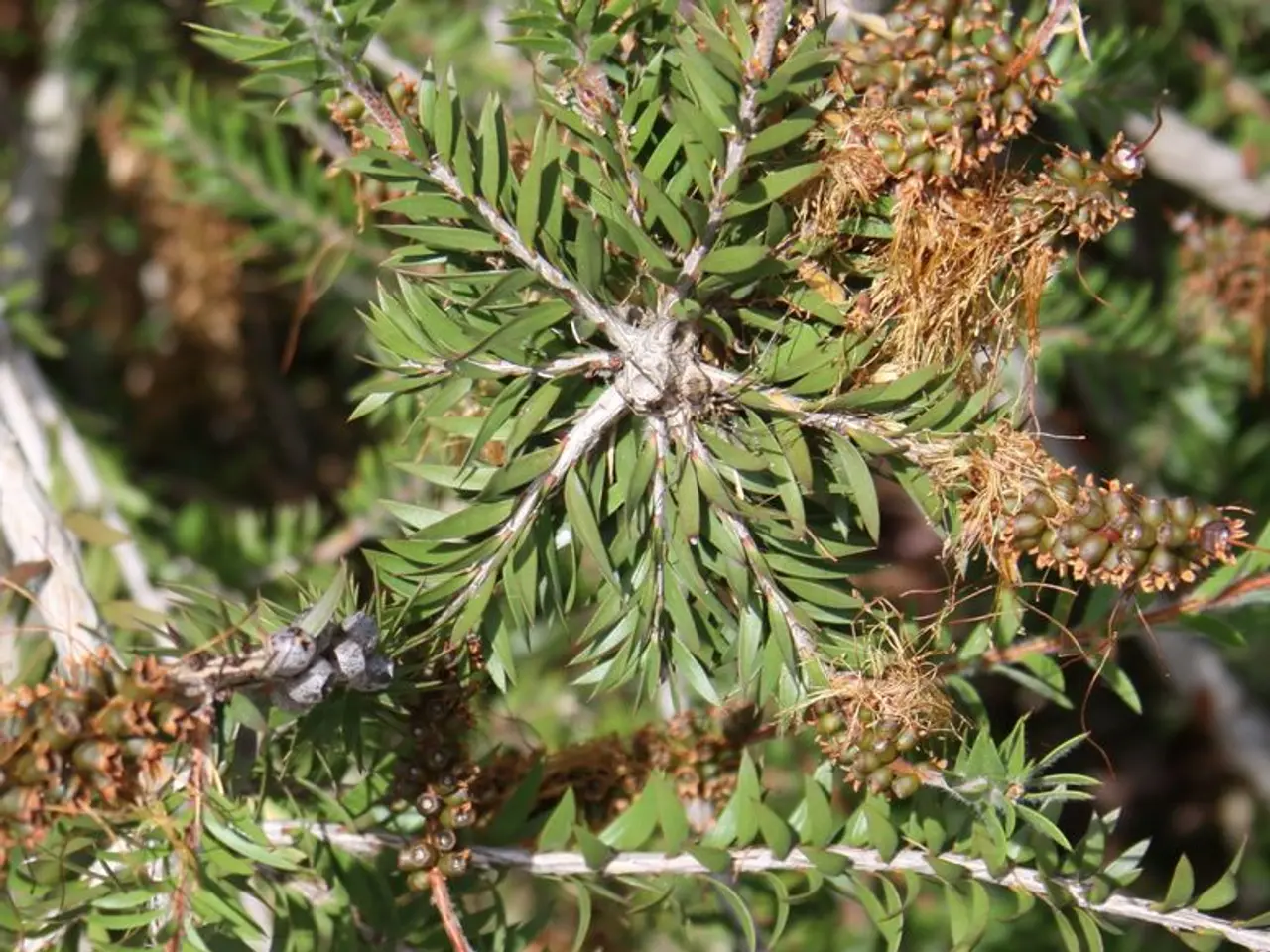Methods for Pruning Pear Trees During Winter Detailed
Winter Pruning Techniques for Pear Trees: A Guide for Cold Climates
Pear trees, like many fruit-bearing plants, require careful pruning to maintain their health and productivity. Winter pruning, in particular, plays a crucial role in the wellbeing of pear trees in cold climates. Here's a guide to help you understand and implement the best winter pruning practices for your pear trees.
Timing is Key
The optimal time for pruning pear trees in cold climates is during the dormant season, typically in late winter just before spring. This ensures that the trees are not exposed to severe icing, and the buds have not yet begun swelling[1][3][4].
Avoid Heading Cuts on Lateral Limbs
It's essential to avoid heading cuts on lateral limbs. Heading cuts encourage rapid, succulent growth in spring, making the tree more susceptible to fireblight infections[1]. Instead, opt for thinning cuts, which remove whole branches to increase sun and air circulation without stimulating excessive new growth.
Thinning for Improved Health
Thinning aggressive upright limbs with thinning cuts where they attach to scaffold branches is beneficial. This practice helps reduce disease pressure such as fireblight[1]. Additionally, removing dead branches, crossing limbs, and growth below the graft union (rootstock suckers) that compete with the graft and may be more prone to infection also contributes to improved tree health[1].
The Benefits of Winter Pruning
Winter pruning when trees are dormant allows wounds to heal faster and reduces disease spread, as the pathogens are less active. Improved light and air flow reduce fungal and bacterial infections, and a balanced structure supports healthier, productive trees[1][2][3][4].
Tools of the Trade
Essential tools for winter pruning pear trees include pruning shears, loppers, and a saw. Loppers are used for thicker branches that are too big for shears, while pruning shears are used for cutting small branches and twigs. A hand saw is used for larger limbs that need more power[5].
Preparing the Pear Tree for Spring
Pruning encourages new growth come spring, enhancing the growth of pear trees. In spring, pear trees should be fertilized with a balanced fertilizer to provide the necessary nutrients for the new growth[2].
Safety First
When pruning, it's important to wear safety glasses to keep eyes safe from flying debris, gloves to protect hands, and ensure the temperature is above freezing to make it easier to handle the branches without worrying about frostbite[5].
Caring for Young and Mature Pear Trees
For young pear trees, the goal is to guide their growth by cutting back the tips of branches and removing weak branches. For mature pear trees, the goal is to keep them healthy and productive by thinning out the center and shortening long branches[5].
The Impact of Winter Pruning
Winter pruning helps pear trees focus their energy on producing fruit instead of growing unnecessary branches, leading to more fruit production. Properly pruning pear trees in winter can nurture and strengthen them for the future, making a noticeable difference when spring arrives[6].
Preventing Disease and Pests
By following these winter pruning techniques, you can reduce the chances of pests and diseases in pear trees. This is achieved by cutting away dead or diseased branches, improving airflow, better sunlight exposure, and strengthening the tree's structure[7].
A Final Word
Remember to clean and disinfect tools between each cut to prevent the spread of diseases. With these winter pruning techniques, you can ensure the health and productivity of your pear trees, preparing them for a bountiful harvest in the spring.
[1] Pruning Pear Trees: A Complete Guide
[2] Pear Tree Care: A Comprehensive Guide
[3] Winter Pruning Pear Trees: What You Need to Know
[4] Pear Tree Diseases: Identification and Prevention
[5] Pear Tree Pruning: Tools and Techniques
[6] Pear Tree Pruning: When and Why
[7] Pear Tree Pests: Identification and Control
Thinning the Home-and-Garden
Thinning aggressive upright limbs with thinning cuts where they attach to scaffold branches helps reduce disease pressure such as fireblight, contributing to improved tree health in your home-and-garden overnight.[1]
Revitalizing the Lifestyle through Gardening
Pruning pear trees in winter allows wounds to heal faster and reduces disease spread, as the pathogens are less active, enhancing your gardening lifestyle.[2]




